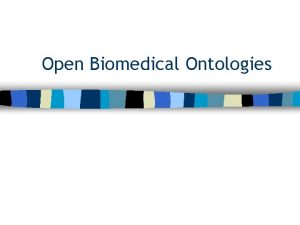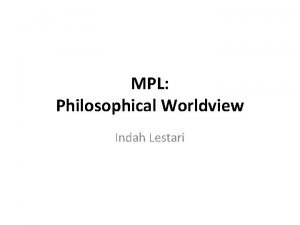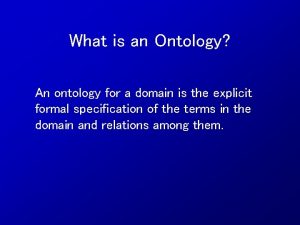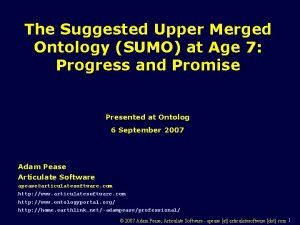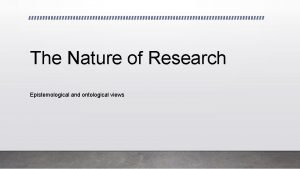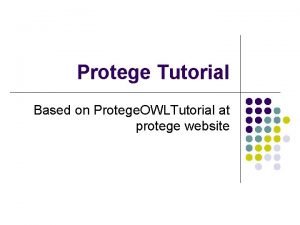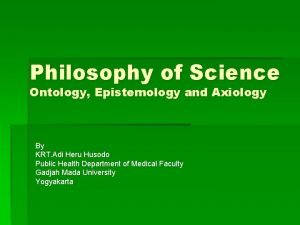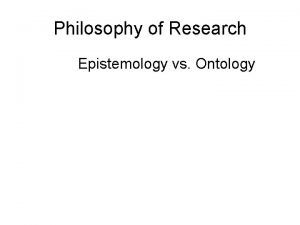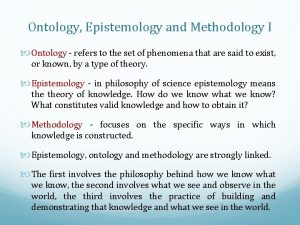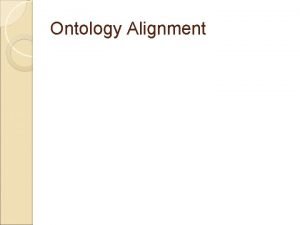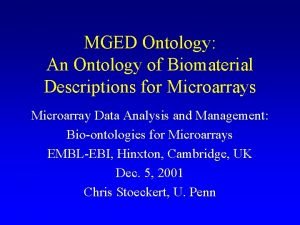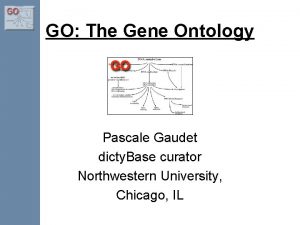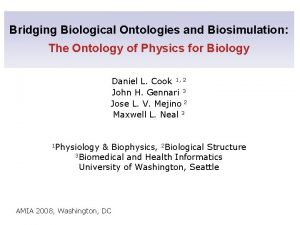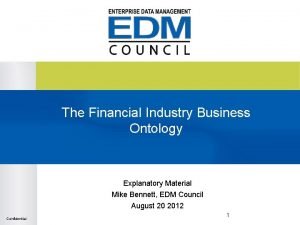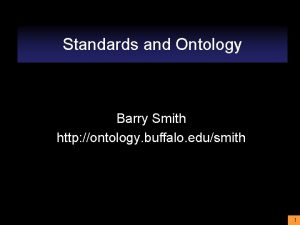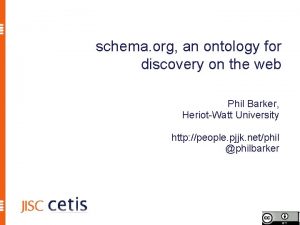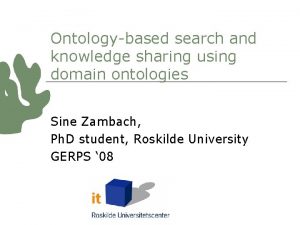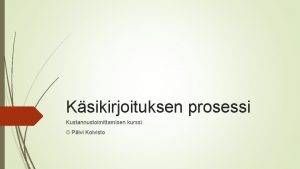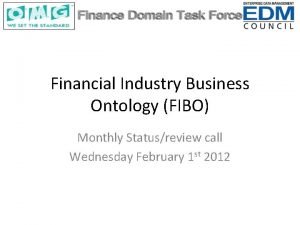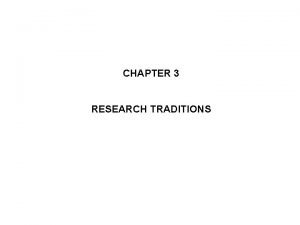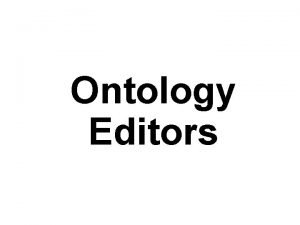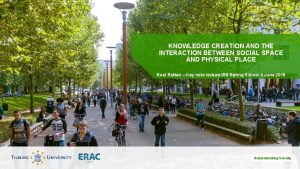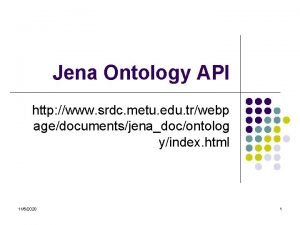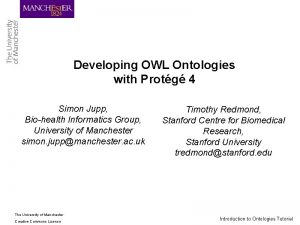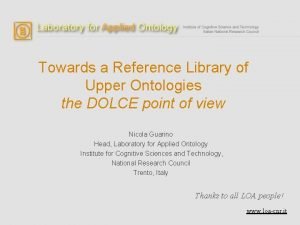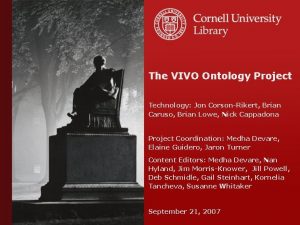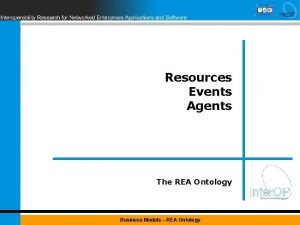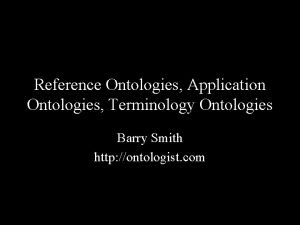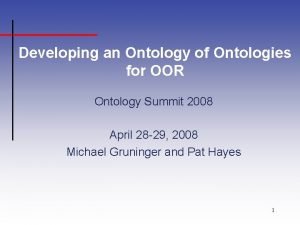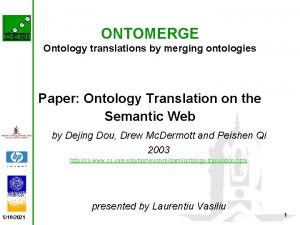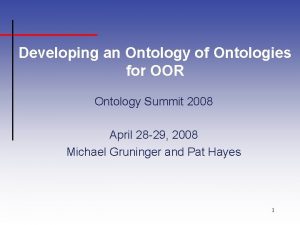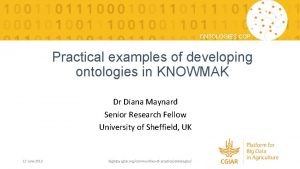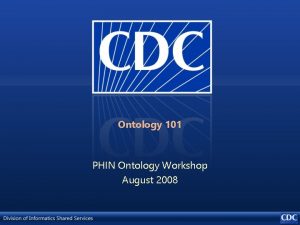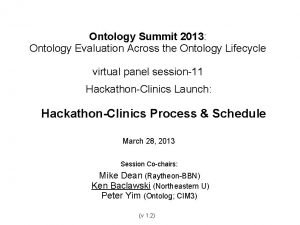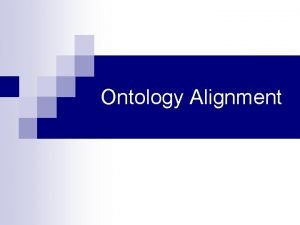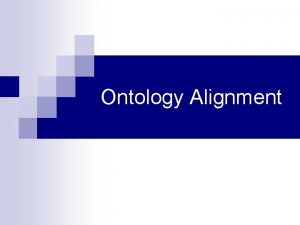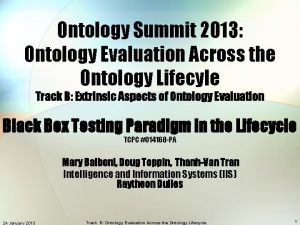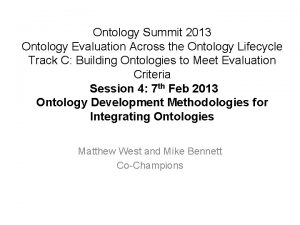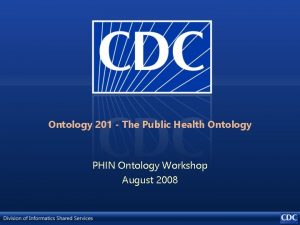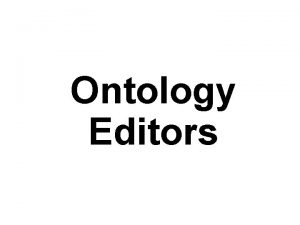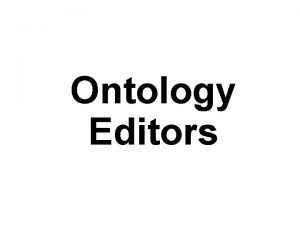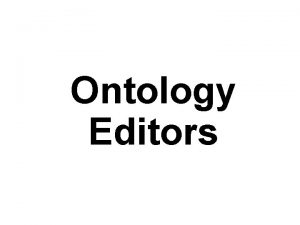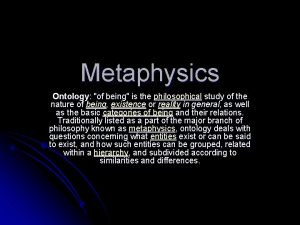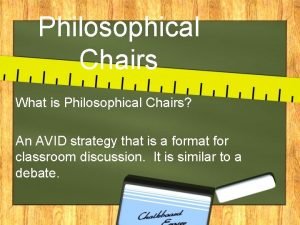Ontologies Some Examples ONTOLOGY is the philosophical study















![Primul Nivel (First Level) [Lyons 1977]: Entităţi de ordinul I (491 BC synsets, numai Primul Nivel (First Level) [Lyons 1977]: Entităţi de ordinul I (491 BC synsets, numai](https://slidetodoc.com/presentation_image/2398f271003b7bd07acb5029db59ab61/image-16.jpg)
![Primul Nivel (First Level) [Lyons 1977]: Entităţi de ordinul I (491 BC synsets, numai Primul Nivel (First Level) [Lyons 1977]: Entităţi de ordinul I (491 BC synsets, numai](https://slidetodoc.com/presentation_image/2398f271003b7bd07acb5029db59ab61/image-17.jpg)
![Primul Nivel (First Level) [Lyons 1977]: Entităţi de ordinul II ((500 BC synsets, 272 Primul Nivel (First Level) [Lyons 1977]: Entităţi de ordinul II ((500 BC synsets, 272](https://slidetodoc.com/presentation_image/2398f271003b7bd07acb5029db59ab61/image-18.jpg)
![Primul Nivel (First Level) [Lyons 1977]: Entităţi de ordinul II ((500 BC synsets, 272 Primul Nivel (First Level) [Lyons 1977]: Entităţi de ordinul II ((500 BC synsets, 272](https://slidetodoc.com/presentation_image/2398f271003b7bd07acb5029db59ab61/image-19.jpg)
![Primul Nivel (First Level) [Lyons 1977]: Entităţi de ordinul III (33 BC synsets, numai Primul Nivel (First Level) [Lyons 1977]: Entităţi de ordinul III (33 BC synsets, numai](https://slidetodoc.com/presentation_image/2398f271003b7bd07acb5029db59ab61/image-20.jpg)
![Primul Nivel (First Level) [Lyons 1977]: Entităţi de ordinul III (33 BC synsets, numai Primul Nivel (First Level) [Lyons 1977]: Entităţi de ordinul III (33 BC synsets, numai](https://slidetodoc.com/presentation_image/2398f271003b7bd07acb5029db59ab61/image-21.jpg)












- Slides: 33

Ontologies Some Examples

ONTOLOGY is the philosophical study of the nature of being, existence or reality in general, as well as the basic categories of being and their relations. ONTOLOGIE - ramură a filosofiei care studiază trăsăturile generale existenței. DEX

Trei tipuri de ontologii • Ontologia globală (filosofie) • Ontologii pe domenii (inteligența artificială) • Ontologia lingvistică


In computer science and information science, an ontology is a formal representation of knowledge as a set of concepts within a domain, and the relationships between those concepts. Ontologia este o reprezentare formală a cunoştinţelor într-un domeniu în formă de un graf ce descrie conceptele domeniului dat, proprietăţile lor şi relaţiile între conceptele date. Онтоло гия (в информатике) — это попытка всеобъемлющей и детальной формализации некоторой области знаний с помощью концептуальной схемы.

Mason-ontology

Medical ontology

Medical ontology

SUMO – Suggested Upper Merged Ontology

Linguistic ontology: A system of symbols representing the concepts (meanings) encoded by NL expressions (lexical units, terms, etc. ) Ontologia lexicală conţine conceptele(noţiuni) descrise de cuvintele limbii şi relaţiile între acestea. Fiindcă limba descrie totul, existenţa materială şi nematerială, Ontologia lingvistică este nevoită să reprezente de fapt totul, toată existenţa.

Word. Net

Word. Net

Mikrokosmos ontology

Euro. Word. Net

Euro. Word. Net Ontologia de vârf Euro. Word. Net: 63 concepte (în afară de top)
![Primul Nivel First Level Lyons 1977 Entităţi de ordinul I 491 BC synsets numai Primul Nivel (First Level) [Lyons 1977]: Entităţi de ordinul I (491 BC synsets, numai](https://slidetodoc.com/presentation_image/2398f271003b7bd07acb5029db59ab61/image-16.jpg)
Primul Nivel (First Level) [Lyons 1977]: Entităţi de ordinul I (491 BC synsets, numai substantivele) : Orice obiect fizic localizat în spaţiu şi timp care poate fi perceput cu organele de percepţie.
![Primul Nivel First Level Lyons 1977 Entităţi de ordinul I 491 BC synsets numai Primul Nivel (First Level) [Lyons 1977]: Entităţi de ordinul I (491 BC synsets, numai](https://slidetodoc.com/presentation_image/2398f271003b7bd07acb5029db59ab61/image-17.jpg)
Primul Nivel (First Level) [Lyons 1977]: Entităţi de ordinul I (491 BC synsets, numai substantivele) : Orice obiect fizic localizat în spaţiu şi timp care poate fi perceput cu organele de percepţie.
![Primul Nivel First Level Lyons 1977 Entităţi de ordinul II 500 BC synsets 272 Primul Nivel (First Level) [Lyons 1977]: Entităţi de ordinul II ((500 BC synsets, 272](https://slidetodoc.com/presentation_image/2398f271003b7bd07acb5029db59ab61/image-18.jpg)
Primul Nivel (First Level) [Lyons 1977]: Entităţi de ordinul II ((500 BC synsets, 272 substantive, 228 verbe) : Orice situaţie statică sau dinamică, proprietate sau relaţie. Ele pot fi localizate în timp, se petrec sau au loc, dar nu există ca un obiect fizic.
![Primul Nivel First Level Lyons 1977 Entităţi de ordinul II 500 BC synsets 272 Primul Nivel (First Level) [Lyons 1977]: Entităţi de ordinul II ((500 BC synsets, 272](https://slidetodoc.com/presentation_image/2398f271003b7bd07acb5029db59ab61/image-19.jpg)
Primul Nivel (First Level) [Lyons 1977]: Entităţi de ordinul II ((500 BC synsets, 272 substantive, 228 verbe) : Orice situaţie statică sau dinamică, proprietate sau relaţie. Ele pot fi localizate în timp, se petrec sau au loc, dar nu există ca un obiect fizic.
![Primul Nivel First Level Lyons 1977 Entităţi de ordinul III 33 BC synsets numai Primul Nivel (First Level) [Lyons 1977]: Entităţi de ordinul III (33 BC synsets, numai](https://slidetodoc.com/presentation_image/2398f271003b7bd07acb5029db59ab61/image-20.jpg)
Primul Nivel (First Level) [Lyons 1977]: Entităţi de ordinul III (33 BC synsets, numai substantive) : Orice declaraţie care există independent de spaţiu şi timp. Ele pot fi adevărate sau false, memorizate sau uitate, acceptate sau refuzate.
![Primul Nivel First Level Lyons 1977 Entităţi de ordinul III 33 BC synsets numai Primul Nivel (First Level) [Lyons 1977]: Entităţi de ordinul III (33 BC synsets, numai](https://slidetodoc.com/presentation_image/2398f271003b7bd07acb5029db59ab61/image-21.jpg)
Primul Nivel (First Level) [Lyons 1977]: Entităţi de ordinul III (33 BC synsets, numai substantive) : Orice declaraţie care există independent de spaţiu şi timp. Ele pot fi adevărate sau false, memorizate sau uitate, acceptate sau refuzate. Spre exemplu, idea, teoria, informaţia. Exemple de entităţi de ordinul III: theory; idea; structure; evidence; procedure; doctrine; policy; data point; content; plan of action; concept; plan; communication; knowledge base; cognitive content; know-how; category; information; abstract; info;


Babel. Net ontology created by connecting Word. Net and Wikipedia

Scopul ontologiilor în Web Semantic Sharing common understanding of the structure of information among people or software agents is one of the more common goals in developing ontologies (Musen 1992; Gruber 1993).

WWW Consortium (W 3 C) desfăşoară activitatea de creare a standardelor pentru ontologiile care vor fi folosite în reţeaua globală de agenţi inteligenţi – programe care activează în Web. “A set of knowledge terms, including the vocabulary, the semantic interconnections, and some simple rule of inference and logic” (Hendler 2001)

SOWA ontology (top level)

SOWA ontology • Matrix of the twelve central categories

The task of classifying all the words of language, or what's the same thing, all the ideas that seek expression, is the most stupendous of logical tasks. Charles Sanders Peirce, letter to editor B. E. Smith of the Century Dictionary

We must be systematic, but we should keep our systems open. Alfred North Whitehead, Modes of Thought

Related to the different layers: 1. NIF: http: //persistence. uni-leipzig. org/nlp 2 rdf/ontologies/nif-core# 2. (there is a gap here, Dublin Core or Foaf are not enough imho) 3 a) MARL: http: //www. gi 2 mo. org/marl/0. 1/ns. html b) ITS: Docu: http: //www. w 3. org/TR/its 20/ , RDF: http: //www. w 3. org/2005/11/its/rdf# c) OLIA: http: //purl. org/olia/ 4. a) Dublin Core: http: //dublincore. org/documents/dcmi-terms/ b) Prov-O: http: //www. w 3. org/TR/prov-o/ 5. also NIF: http: //persistence. uni-leipzig. org/nlp 2 rdf/ontologies/nif-core# 6. lemon: http: //lemon-model. net/ 7. a) DCAT and Data. Id: http: //wiki. dbpedia. org/coop/Data. IDUnit b) NERD: http: //nerd. eurecom. fr/ontology

“A set of knowledge terms, including the vocabulary, the semantic interconnections, and some simple rule of inference and logic” (Hendler 2001) OWL – Web Ontology Language

Protege

Protege
 Obo
Obo Philosophical worldview in research
Philosophical worldview in research Sometimes you win some sometimes you lose some
Sometimes you win some sometimes you lose some Sometimes you win some sometimes you lose some
Sometimes you win some sometimes you lose some Ice cream count or noncount noun
Ice cream count or noncount noun Force and motion
Force and motion Some say the world will end in fire some say in ice
Some say the world will end in fire some say in ice Some say the world will end in fire some say in ice
Some say the world will end in fire some say in ice Some may trust in horses
Some may trust in horses What is an ontology
What is an ontology Suggested upper merged ontology
Suggested upper merged ontology Research ontology and epistemology
Research ontology and epistemology Pizza ontology
Pizza ontology Ontology, epistemology, axiology
Ontology, epistemology, axiology Ontological vs epistemological
Ontological vs epistemological Ontology refers to
Ontology refers to Ontology alignment
Ontology alignment Types of ontology
Types of ontology Dicty base
Dicty base Ontology in biology
Ontology in biology Financial industry business ontology
Financial industry business ontology Barry smith ontology
Barry smith ontology Schema.org
Schema.org Basic formal ontology
Basic formal ontology Ontology kurssi
Ontology kurssi Fibo finance
Fibo finance Ontology research methods
Ontology research methods Ontology editors
Ontology editors Ontology creation
Ontology creation Metu class
Metu class Pizza ontology download
Pizza ontology download Dolce ontology
Dolce ontology Vivo ontology
Vivo ontology Rea ontology
Rea ontology
